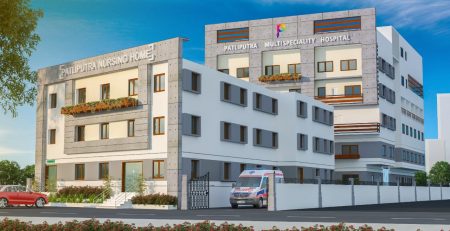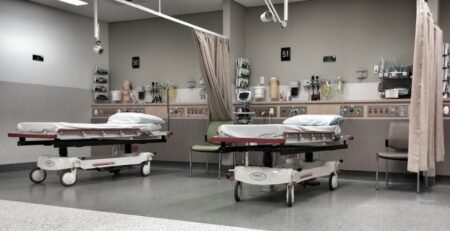Recommended Flooring for Healthcare Environments
admin2022-01-16T20:43:47+00:00Hospital flooring is a very important and visible aspect of the healthcare environment. It can contribute to a positive experience when done well, or can result in problems and negative impressions when done poorly.
When part of the complete design concept, the choice of floor covering can have a major impact on the ‘feel’ of a hospital, health centre or specialist care home making a real difference to the patient experience through the Healthcare creation of a homely, relaxed and welcoming environment. There are specific aspects of flooring design and specification which can be considered to ensure patients are comfortable and feel at ease. These include the use of flooring with a matt appearance and the use of natural colours and effects. Within the specialist care sector the overall finish, colour and look of the floor requires careful consideration.
Types of Flooring:
The purpose of a floor is to provide horizontal clean surface, which is strong enough to bear super-imposed loads. The strength of the floor depends on type of flooring used.
- Hard flooring includes substances like, marble, brick, ceramic tiles, Kota stone, cement/concrete, terrazzo, and wood.
- Soft flooring includes materials such as linoleum, rubber the false flooring, PVC or Vinyl flooring.
Sheet vinyl is the most commonly used product followed by VCT –Vinyl composition tile.


Spectrum of Care:
- Healthcare design is about the creation of safe and clean surroundings and an uplifting environment can inspire confidence and a sense of wellbeing amongst patients, staff and visitors alike.
- When it comes to room spaces, they are further categorised by their function – either dry, wet or specialist and key considerations such as infection control, sustainability, ease of cleaning, slip resistance and acoustics are taken into account.
- Hygiene is paramount within a healthcare setting and to prevent the ingress of dirt, all joints can be welded and sealed to provide a seamless finish.
- The control of unwanted noise is also important in the creation of a calm environment and the use of acoustic floor coverings is one way to reduce noise levels.

Healthcare flooring hygiene – areas of concern:
- Microbes tend to proliferate on the floor surface in hard-to-clean seams, sharp angles or corners, depressions in the floor, divots, punctures, or anywhere the finish has been breached. Microbes can infiltrate the actual floor covering itself, should it become compromised or susceptible to damage.
- Unwanted microorganisms can also collect in dark, damp pockets underneath the flooring, such as the underside of carpet, vinyl, rubber sheeting, planking, or tile.
- It’s easiest to remove pathogens in wide open, visible areas. Facility managers should ensure the flooring can withstand the cleaning chemicals being used, in the concentrations applied, as well as the frequency and duration of exposure. Stain resistance to disinfecting agents may also be a concern with some types of floor coverings
Preferred colour:
Many people wrongly believe that hospitals must be painted in white. This is partially true because light colours enable the staffs who clean the place detecting stains and dirt easily. But this need not always be white: there are many shades that may be used. Beige, pink and blue can successfully replace white as they enable the patients to relax.
- The beige and honey limestone tiles are wonderful, extremely practical and also offer the warm feeling.
- Using cheerful and varied colours and textures, keeping in mind that some colours are inappropriate and can interfere with provider assessments of patients’ pallor and skin tone, disorient some older or impaired patients, or agitate others and the staff, particularly so in some psychiatric cases.
- Admitting ample natural light wherever feasible and using colour-corrected lighting in interior spaces, which closely approximates natural daylight is good.
- Providing a view of the outdoors from every patient’s bed, and elsewhere wherever possible and murals depicting nature are helpful when such view is not available.
Advantages of Vinyl:
The operational requirements of a hospital environment are inherently complex and floor finishes are required to meet both the functional and aesthetic standards of many different spaces. Vinyl flooring is available in an extensive range of looks, textures and performance properties. Due to its hardwearing, water-resistant nature, and ease of cleaning, vinyl is often the product of choice for many of today’s modern healthcare facilities. The smooth and flat surface is suitable for wheeled traffic and rolling loads.
- Vinyl is a cost effective, multi-faceted plastic – a necessity in everyday life due to its flexibility, durability, performance and functionality.
- The availability of floor coverings in sheet, tile and plank, in varying thicknesses and lengths, colours and decorations gives the user many options without any need for compromise in terms of performance, quality and aesthetics in today’s modern healthcare environments
- It is the skin-like quality that makes vinyl flooring so attractive from a maintenance standpoint.
- The great thing about vinyl flooring is that it provides a relatively continuous covering without the gaping seams and natural absorbency of wood or the grout lines of ceramic tile.
- Commercial vinyl floor coverings conform to specifications that require superior durability and stain resistance (particularly useful in hospital settings). Some commercial-grade vinyl floor covering is non-slip for high public traffic areas.
Tips to choosing flooring material:
One must remember four priority issues that goes into flooring decisions:
- Cleanability
- Aesthetics
- Durability
- Initial cost.
The success of a flooring installation depends on many factors, not just the material itself.
- Selecting the right product for the right application
- Floor preparation before installation
- Hiring skilled installers
- Using recommended maintenance protocols to keep the floor looking its best
If the above steps are not followed, the flooring may give rise to the following problems:
- Adhesion
- Bubbling
- Cracking
- Discoloration
- Rips or Tears
- Shrinkage
Most commonly selected positive attributes of rubber flooring are Comfort Underfoot, acoustics, sustainability & cleanability. Most commonly selected negative attributes of rubber flooring are Initial Cost, odour, aesthetics & specialised installation requirements.
Pathogen growth in hard-to-clean places:
When it comes to reducing pathogen growth in hard-to-clean places on and around the floor, the best and easiest strategy is to reduce the number of locations that are hard to access during the floor covering design and selection stage, especially in hospitals where sanitation is a top concern.
Surface gaps:
Breaches in solid floor surfaces are another major concern in healthcare facilities. Any flooring that has seams or gaps that need to be sealed in some way, such as the heat-welding of seams in vinyl and rubber flooring, can later develop weak points that fail. Harsh cleaners, the repeated agitation of mopping and scrubbing, and daily exposure to moisture all take their toll on heat-welded seams.
In the same way, tile floors, whether grouted or abutting, provide copious opportunities for undesirable microbes to set up shop – whether in porous cementitious grout, depressions created by eventually shrinking elastomeric grout or in the seam where two ungrouted tiles adjoin. Floor finishes that are easily scratched or punctured present similar risks. Once water or other fluids enter a breach in the floor, the result can be a hidden hygiene disaster.
Flooring in Critical care areas:
OT (Operations theatre) complexes are designed and built to carry out investigative, diagnostic, therapeutic and palliative procedures of varying degrees.
Flooring in OT:
- It should be seamless, including skirting, should not be of porous stone as it absorbs moisture and could be a source of bio-burden. The surface / flooring must be slip resistant, strong & jointless. The recommended minimum conductivity is 1m ohm and maximum 10m Ohms. Ideally, Epoxy flooring (In the form of paint) or jointless Vinyl flooring is recommended with coving at the corners to avoid a sharp edge.
- The flooring, walls and ceiling should be non porous, smooth, seamless without corners (coving) and should be easily cleanable repeatedly. The material should be chosen accordingly.
OT Scrub room: This is planned to be built within the restricted area. Elbow operated or infrared sensor operated taps / water source is ideal. It is essential to have non slippery flooring in this area.
Patient rooms: The flooring in the patient room is rubber, second to carpet in sound reduction qualities. The reason carpet is not chosen because spills and mishaps need to be cleaned up immediately.
Corridors/Hallways: Carpet is chosen for the corridors/hallways special carpet for hospital application.
Conclusion:
One must remember that flooring is critical to making a good impression on visitors & do not take any chances when specifying flooring, since the costs from flooring failures are high. Making repairs or replacing a bad floor is not always feasible given the fact that hospitals are open around the clock. Hospital floors have to withstand heavy traffic and are expected to look attractive for many years. Problems with flooring materials not adhering to the floor can result in tripping hazards thereby creating an unsafe environment.




Leave a Reply